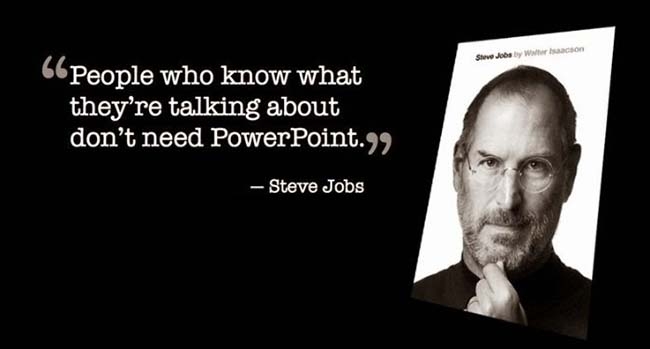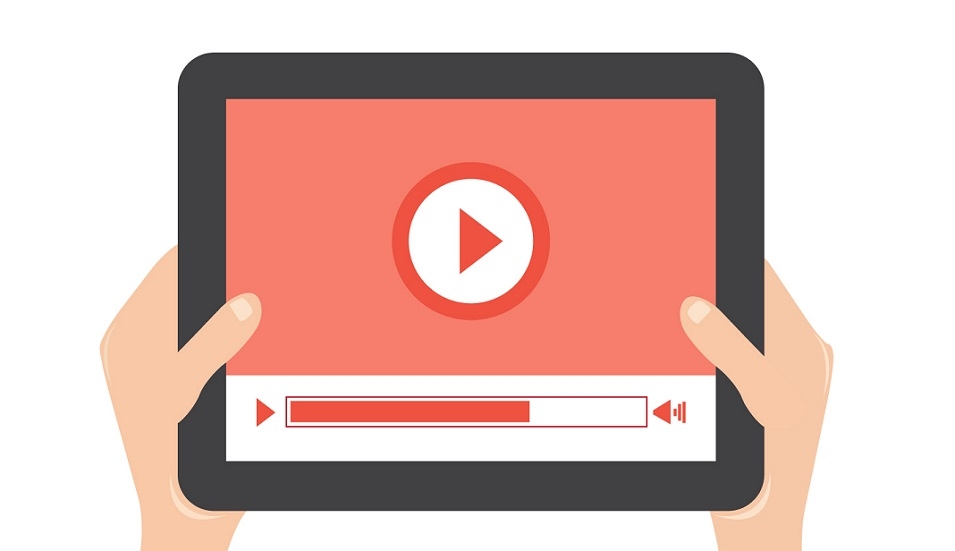
What is persuasion? It's the art of convincing people to do what you want them to do. That’s pretty powerful, isn’t it? It is what makes us follow and believe in leaders and influencers.
When it comes to business, persuasion is among the most coveted skills. Whether you are selling, educating your audiences or just motivating a group of people, it’s imperative that you have a persuasive presentation. But, as mentioned before, persuasion isn’t science – it’s an art, and it's not as easy as it sounds.
To make being persuasive easier, we've found some great examples and inspiring ideas for your next persuasive presentation. We’ve searched every nook and cranny of the web to come up with the best tips from top presenters. Hope you enjoy reading!
Historically, persuasion involves three components:
- Ethos (credibility)
- Logos (logic)
- Pathos (emotion)
By combining these three fundamentals, a speaker can enhance their power of persuasion.
1. Connect with Your Audience
Chris Anderson has been a TED Curator for over 12 years and he shares these four guidelines for great public speaking. In his words, “Your number one task as a speaker is to transfer into your listeners' minds an extraordinary gift -- a strange and beautiful object that we call an idea.”
Basically, it’s important that you know who you’re speaking to; make sure your ideas are clear and can be understood by your audience. Speak in a manner and use words your listeners understand, so you can connect to them on a deeper level to deliver a persuasive PowerPoint presentation.
2. 'Mind' Your Body Language
Everyone knows that when it comes to giving amazing persuasive presentations, very few people come close to Steve Jobs. How did he do it? Forbes has created this 4 1/2-minute video to break it down in three crucial points:
- Maintain eye contact
- Open posture
- Use effective hand gestures
Research has shown that speakers are perceived to be more effective and competent when they make hand gestures, rather than keeping their hands still. In fact, an academic study demonstrated the importance of nonverbal communication. According to this article, Albert Mehrabian, a professor emeritus of psychology at UCLA, “assigns only a 7 percent value to the choice of words in face-to-face communications, while tone of voice has a 38 percent value and facial expression 55 percent.”
Additionally, it’s important to continually smile and be confident. British psychologist Richard Wiseman termed this the “as if” principle. Behave in a specific way and it’s likely you’ll start to feel more happy and confident. Yes, this is exactly the same thinking behind the cliché “Fake it till you make it.”
3. Use Complementary Visual Aids
Did you know that 80 to 90 percent of the information our brain processes comes through our eyes, and two-thirds of the brain’s electrical activity is dedicated to vision when our eyes are open? It’s really astonishing, and this is why design is extremely crucial for persuasive PowerPoint presentations.
Just like words, colors also have meaning that impacts presentations. Colors signify different emotions and associations. This one-minute video will help you understand which parts of our body respond to different color stimuli.
Neil Patel, co-founder of Crazy Egg, Hello Bar and KISSmetrics says, “You can use both warm or cool colors for persuasion. But it’s very important to include accents on parts that you want to emphasize.”
Source: Conversioner
Another neat trick to ensure you have a persuasive presentation is to use interactive content. A study asked 1,000 adults to rate different types of ad content. Results show that twice as many consumers in the study said interactive ads were “memorable,” compared to static ads. This is great news if you use PowerPoint, because you can easily add animations, or just embed YouTube videos to PowerPoint to get that extra edge.
4. Utilize Social Proof Theory
Brands attract brands, and humans tend to have the fear of missing out (FOMO). No wonder social proof was included in this great infographic on the Power of Persuasion infographic. In short, Social Proof Theory was popularized by psychologist Robert Cialdini, who concluded that a person who does not know what the proper behavior for a certain situation is will look to other people to imitate what they are doing and to provide guidance for his/her actions.
There are five types of social proof shared by venture capitalist Aileen Lee, namely:
A. Expert social proof – a credible expert in the industry who endorsed a service or product. For example, a pharmacist stating that a ground-breaking medical device can be useful to tackle healthcare challenges.
B. Celebrity social proof – this is practiced often, especially in advertisements. According to Lee’s article, Jessica Simpson’s endorsement helped Beautymint attract 500,000 visitors on day one of its launch.
C. User social proof – people need to see it to believe it. Showing how your product or service can be used helps your audience better understand the value you want to bring out in the presentation.
D. Wisdom of the crowd – democracy has its merits, as people want to be on trend. If you can share that what you are presenting is popular, it’s a sure way to make yourself stand out among other persuasive presentations.
E. Wisdom of friends – people don’t want to hear you brag about yourself. They want to hear it from others because it seems more credible. Nielsen conducted a survey of 25,000 people and 90 percent of consumers noted that they trust recommendations from people they know, while 70 percent trusted consumer opinions posted online.
To get the most from these concepts, understand how you can implement one of the 10 techniques of Social Proof Theory to make your presentation more persuasive.

5. Use these Four Words
Studies have shown that using the word “you” gets people excited. On top of that, the two-minute video below shares three other words to use for persuasive presentations: “free,” “because” and “instantly.”
6. Present a Story
Source: Duarte
Nancy Duarte, acclaimed author of two award-winning books and CEO of Duarte, shares in her Harvard Business Review article how speakers can have persuasive presentations. She states the importance of storytelling. To persuade your listeners, you should remind your audience of the status quo and reveal the path to a better way. In short, you provide the solution to a conflict that you presented to your listeners. Duarte explains:
“That tension helps them persuade the audience to adopt a new mindset or behave differently — to move from what is to what could be. And by following Aristotle’s three-part story structure (beginning, middle, end), they create a message that’s easy to digest, remember, and retell.”
To see this theory in action, we recommend you to watch this persuasive presentation by Sick Weather.
If you enjoyed watching that and analyzing why it stood out among other persuasive PowerPoint presentations, read 34 other amazing pitch decks from this article.
7. Be Credible and Attractive
You might not hear this often, but people don’t buy products. They just purchase the better versions. So, talk about product benefits, not features.
Yale University’s recommendation
If you’re shy, know that “Confidence is not something you have, it’s something you create,” according to Tony Robbins. Listen to this motivational podcast to change your state of mind, and boost your confidence for an effective persuasive presentation.
8. Strategize Your Content Flow
To produce one of the best persuasive presentations, you need to insert the important notes at the beginning or at the end. The results of a study done by Murdock in 1962, known as the serial position effect, are shown below. The gist of it is that people recall information better in the beginning and at the end of a presentation. So, remember to position important key takeaways in the beginning and the conclusion, to have a persuasive presentation.
Source: Simply Psychology Org
To recap: there are multifarious techniques to enhance your skills and create a persuasive presentation, and one aspect includes using complementing and captivating designs. So, our last tip to for you is to design your presentation using the Master Slide (six-minute video).
If you’ve written or sketched out your presentation content and don’t have the time to design, don’t worry! Reach out to us and we’ll type and design your PowerPoint for you, so you’re one step closer to having an epic persuasive PowerPoint presentation!












